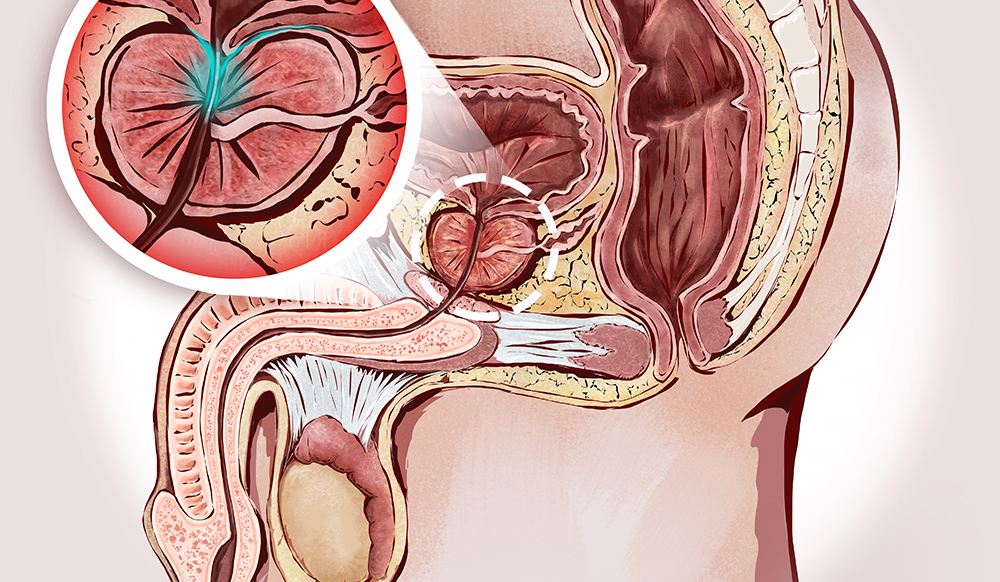Benign Prostatic Hyperplasia
Dr Sharon Elizabeth Allison LAc DAOM
This case study reflects Acupuncture | Benign Prostatic Hyperplasia
Traditional Chinese Medicine offers a low cost and low side effect approach to treating BPH and the associated LUTS symptoms.
Classical Chinese medical literature does not directly mention BPH or enlargement of the prostate gland and there are no specific therapies for treating these conditions. Chinese texts generally classify BPH as a part of the “Lin” syndrome diagnosis. Lin Syndrome encompasses a range of conditions associated with urinary obstruction, which is a significant part of BPH diagnosis. Other symptoms of Lin syndrome include pain with urination, hematuria, cloudy urine, and urinary stones; however, these symptoms are not part of the BPH diagnosis. Typical TCM patterns are Qi and Blood Stasis, Damp-Heat accumulation, and Kidney Deficiency (Dharmananda, S. 2002).
In Giovanni Maciocia’s book, “The practice of Chinese Medicine”, the structure of the prostate corresponds to the uterus and is strongly connected to the Kidney and Liver organs. The Kidneys are the source of “Tian Gui”, the bodies Jing or Essence and the prenatal energy that is inherited from the parents. Like the uterus, the prostate houses the “Tian Gui”. In addition, the prostate is connected to the Governing, Conception, and Penetrating vessels, 3 of the eight extra meridians (Maciocia, G., 2008).
The pathology of BPH is characterized by deficiency and excess. Deficiency of the Kidney, Spleen, and Lung organs results in the accumulation of dampness and phlegm due to inadequate transforming and transporting of the bodies fluids. The deficiency of the Kidney develops into stasis of the essence. Stasis of essence leads to stagnation of Liver Qi and Liver Blood. In addition, other organs that may be involved in BPH are the Heart and Urinary Bladder (Maciocia, G., 2008).
Although patients can exhibit any number of differing patterns, in general the TCM approach to BPH can be separated into the following 6 differentiations (Damone, B., 2008).
- Liver Qi Stagnation
Lower Urinary Tract Symptoms, difficult urination, symptoms worse with emotional outbursts, anger, irritability, depression, chest & hypochondriac distention & pain, headaches. Red tongue with a thin yellow coating, and wiry pulse.
- Damp Heat in the Lower Jiao.
Lower Urinary Tract Symptoms, Anuria, Dribbling, dark-scanty urine, burning pain during micturition, Lower Abdomen Distention, bitter sticky taste in the mouth, thirst with little desire to drink, constipation, incomplete defecation, Red tongue with a thick yellow coating, rapid slippery pulse.
- Spleen Qi sinking
Lower Urinary Tract Symptoms, Distention & heaviness in the low abdomen, urgency, inability to urinate, scanty-hesitant urination, Fatigue, Shortness of breath, weakness, weak voice, poor appetite, chronic loose stools/diarrhea, rectal prolapse with incomplete defecation, pale tongue with thin, white coating and weak thready pulse.
- Kidney Yang Deficiency
Lower Urinary Tract Symptoms, Anuria or dribbling, weak urine stream, Sore, weak low back and knees, cold limbs and body, pale complexion, fatigue, pale tongue with a white coat, Deep, weak & thread pulse, particularly in the chi position.
- Lung Heat Congestion
Lower Urinary Tract Symptoms, Difficult, sluggish urination or anuria, rapid, shallow respiration, Dry throat, excessive thirst, cough, sensation of heat in the chest, thin, yellow tongue coating, rapid pulse.
- Blood Stasis.
Lower Urinary Tract Symptoms plus stabbing pain in groin area, sharp pain on urination, Dribbling or thin urine stream, interrupted urination, anuria from trauma, surgery, or kidney stones, Distention & pain in the low abdomen, dark purple tongue with petechiae, choppy or wiry pulse.








